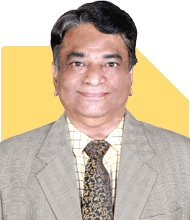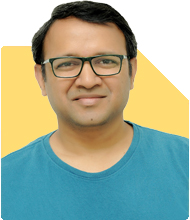Worried Engineer Vijay Kumar (43) from Hyderabad Seeks Job Help: 'No Skills, No Job, Worried About Future'
Maxim Emmanuel | Answer |Ask -Follow
Soft Skills Trainer - Answered on Jun 26, 2024
An alumnus of the Xavier Institute of Management and Research, Mumbai, Maxim has over 30 years of experience in training young professionals and corporate organisations on how to improve soft skills and build interpersonal relationships through effective communication.
He also works with students and job aspirants offering career guidance, preparing them for job interviews and group discussions and teaching them how to make effective presentations.... more

मैं विजय कुमार एन हूं, 43 साल का हैदराबाद से हूं, मुझे कोई उचित नौकरी नहीं मिल रही है, मेरे पास इंजीनियरिंग की डिग्री है, लेकिन कोई कौशल नहीं है, कृपया मेरी मदद करें, मैं अपने भविष्य और परिवार के बारे में चिंतित हूं।
हालांकि अगर आपको पेशेवर सलाह की आवश्यकता है तो सहायता करने में खुशी होगी .. https://m.me/maxim.emmanuel.2024
आप नीचे ऐसेही प्रश्न और उत्तर देखना पसंद कर सकते हैं
Patrick Dsouza |1428 Answers |Ask -Follow
CAT, XAT, CMAT, CET Expert - Answered on May 14, 2024
Dr Dipankar Dutta |1837 Answers |Ask -Follow
Tech Careers and Skill Development Expert - Answered on Dec 05, 2025
Dr Shyam Jamalabad |108 Answers |Ask -Follow
Dentist - Answered on Dec 05, 2025
Dr Shyam Jamalabad |108 Answers |Ask -Follow
Dentist - Answered on Dec 05, 2025
Dr Shyam Jamalabad |108 Answers |Ask -Follow
Dentist - Answered on Dec 05, 2025
Dr Dipankar Dutta |1837 Answers |Ask -Follow
Tech Careers and Skill Development Expert - Answered on Dec 05, 2025
Ulhas Joshi |280 Answers |Ask -Follow
Mutual Fund Expert - Answered on Dec 05, 2025
Dr Dipankar Dutta |1837 Answers |Ask -Follow
Tech Careers and Skill Development Expert - Answered on Dec 04, 2025
Ravi Mittal |676 Answers |Ask -Follow
Dating, Relationships Expert - Answered on Dec 04, 2025
Anu Krishna |1745 Answers |Ask -Follow
Relationships Expert, Mind Coach - Answered on Dec 04, 2025
Anu Krishna |1745 Answers |Ask -Follow
Relationships Expert, Mind Coach - Answered on Dec 04, 2025

























